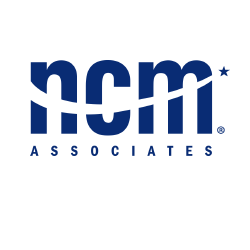For non-auto clients, visit sf.ncmassociates.com.
The Simplest Common Denominator

At a recent 20 Group meeting, I had members discussing ways in which they could improve their service departments when one member stated that he liked looking at the service department by its simplest common denominator, a labor hour. So, what does one labor hour look like in your dealership from sale to cost to profit? Let’s take a look.
How to Measure the Service Department using a Single Labor Hour
Step 1: Get the total labor hours flagged by the shop from the service manager at the end of the month. Then, take the total labor sales dollars for the month (from your financial statement) and divide it by the total hours flagged. This gives you your total shop effective rate for the month.
Step 2: Then take the same sales dollars and subtract the gross profit generated for the month, (again, off your statement) to get your cost of labor. Divide this number by your total hours flagged and you have your average cost for a technician labor hour.
Step 3: You must also consider service department overhead. Take total service department expenses and divide by total hours. This will give you your expenses per labor hour.
Step 4: By adding the overhead expenses per labor hour to the labor cost per hour you have your total cost per labor hour. The difference between your total shop effective rate and your total cost per labor hour is your service labor profit per hour.
This is a simplistic calculation but can be impactful and help in visualizing the challenge and opportunity in your service department. If you have minimal opportunities to lower your cost per hour (labor or expenses) you must review your pricing and effective rates.
Additional Service Numbers to Measure in hours:
WIP:
Another number to review in hours would be WIP (work in process). Simply take the dollars in your work in process account and divide by average cost for a technician labor hour (from above). This gives you the number of hours on RO’s that have not been processed through accounting. How many hours is it and how many hours do you flag in an average day? How many days does this number represent?
Policy:
Policy is another account that can be can be reviewed in hours. Assuming policy has been processed at cost, take your policy expense and divide by average cost for a technician labor hour. This will provide you with how many lost labor hours you have had for the month.
Supplies:
Supplies and supply recovery is an expense that should be reviewed. Most dealerships calculate supply recovery on the RO as a percent of sales with a maximum amount to be charged. Make the maximum amount an odd dollar amount and not $25 even, for example. Do you recover the amount you spend on supplies?
By using a labor hour as the measure, and some quick calculations, you can evaluate your service department. These metrics and many more are shared with members in the monthly composite, and at each 20 Group meeting.
If you are looking to improve your service, used vehicle, or any other dealership department, NCM Associates team of experts are here to help. With our 20 Groups, automotive training in both fixed and variable ops, as well as our benchmarking and automotive reporting software, we would love to create a customizable solution for your dealership challenges.
